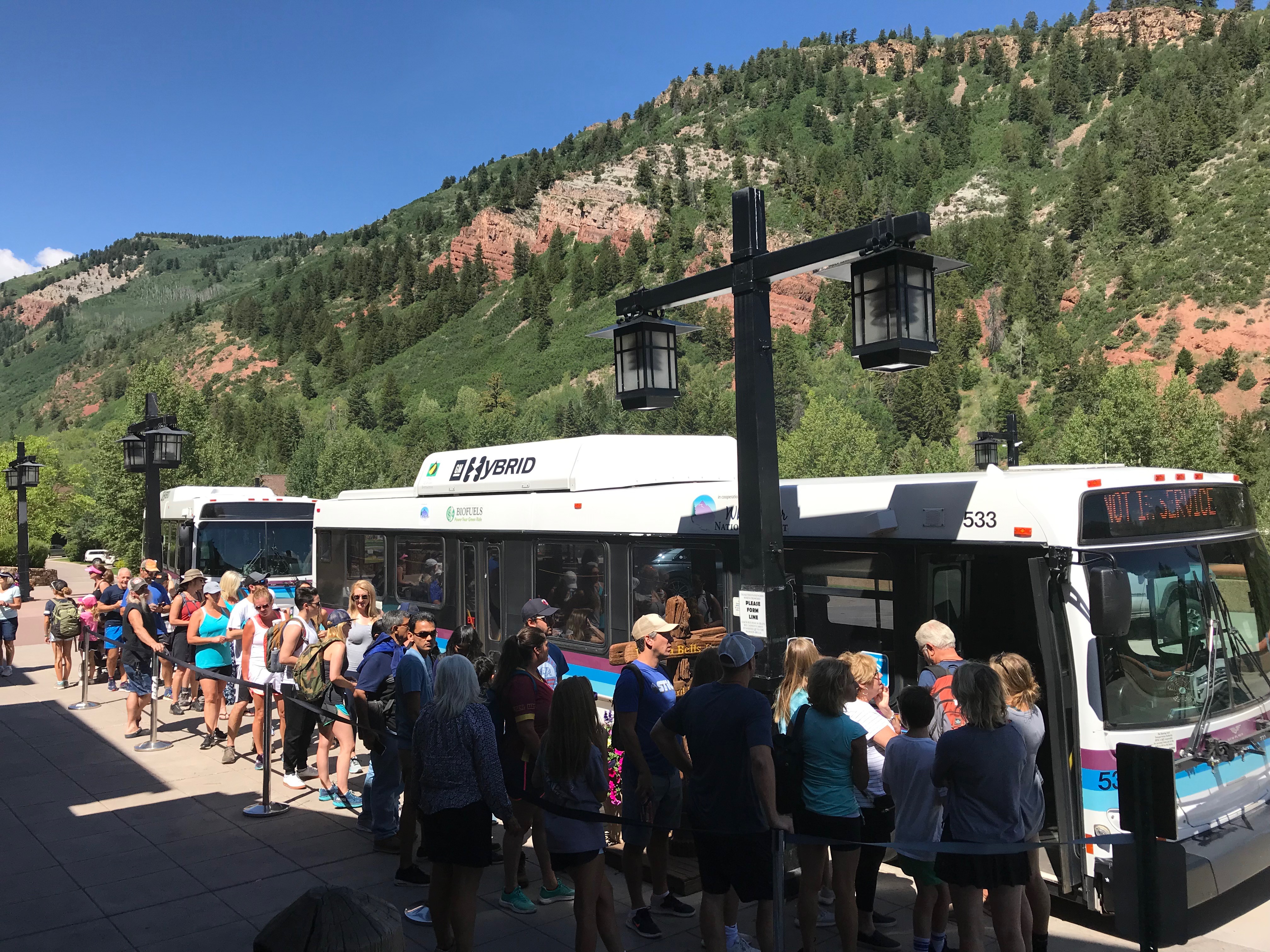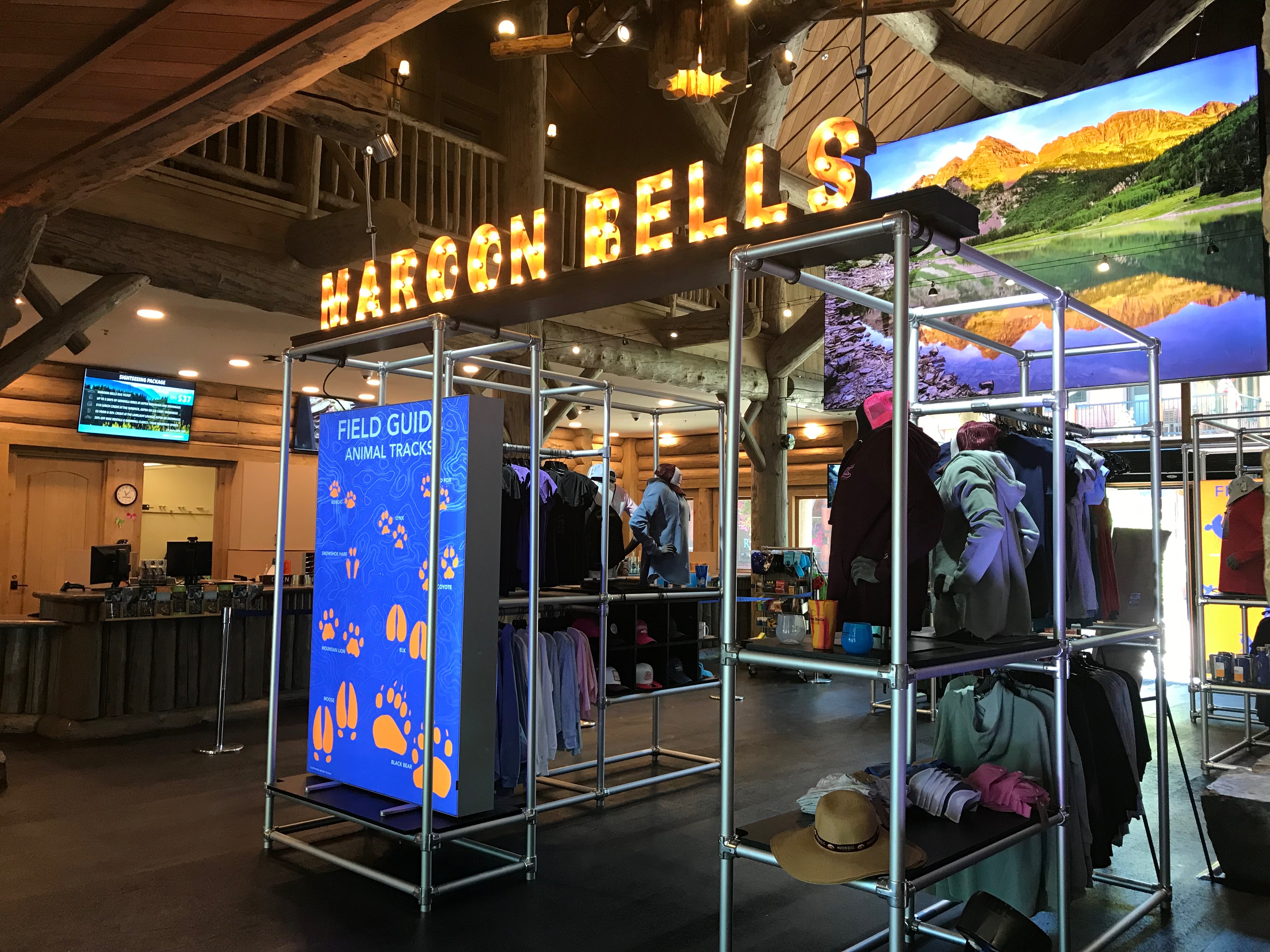The Local newsletter is your free, daily guide to life in Colorado. For locals, by locals.
Colorado’s Maroon Bells—the two crimson-colored peaks emerging above Maroon Lake’s tranquil waters—is among the most-photographed scenes in North America. Visitors from around the globe flock to the scenic wilderness area year-round, but particularly from mid-June through mid-October, to view the quintessential Rocky Mountain scenery and snap the perfect picture of the peaks surrounded by spectacular foliage.
But like many of Colorado’s wild places, visits to the Bells are taking a toll on the vulnerable alpine site, which is located just 11 miles from Aspen. It’s not a new problem. We’ve been warned, we warned you, and it is still not enough: Crowds have trampled fragile plants and increased trail erosion, and some visitors have ignored signs forbidding them from entering Maroon Lake or left garbage behind at the site—not to mention the heaps of human waste not properly disposed of in the surrounding wilderness.
It’s no wonder the Leave No Trace Center for Outdoor Ethics included West Maroon Trailhead in its 2019 list of Hot Spots, or areas suffering from the severe impacts of outdoor activities.
Visitor impacts at the Bells have been an ongoing conversation for decades. In the late 1970s, elected officials and U.S. Forest Service personnel became concerned by the amount of traffic to the scenic area, as well as the impacts upon the plants along the road, which were “quite visibly being affected” by automobile emissions, according to Kent Blackmer, co-director of operations for the Roaring Fork Transportation Authority (RFTA).
[Read more: Are We Loving Colorado’s Wild Places to Death?]
As a result, officials implemented a shuttle-bus system in 1977 “to reduce pollution on the fragile 10-mile road to Maroon Lake,” according to an article published in the Aspen Daily News. This mandatory shuttle has been in effect ever since, and the statistics are impressive. Between 1979 and last year, ridership increased nearly 350 percent to an all-time high of just over 243,000 people, according to data provided by RFTA communications manager Jamie Tatsuno.
But these numbers only paint a partial picture of how many people are visiting Maroon Bells today. According to Shelly Grail, recreation manager for the Aspen-Sopris Ranger District of the U.S. Forest Service, people with camping permits, handicap license plates, children under the age of two, and vehicles with 12 or more passengers are still allowed to drive their own vehicles up to the lake, as is anyone visiting outside the 8 a.m. to 5 p.m. shuttle hours. Last year, the Forest Service estimated this accounted to an additional 64,000 people. Add to that about 13,000 cyclists riding to the site, and last year’s visitation numbers rise to roughly 320,000 people—all during from mid-June to early October.
Grail says the total is likely even higher, because no counts occur between 7 p.m. and 7 a.m. According to the Aspen Times, visits to the Maroon Bells Scenic Area have nearly doubled since 2014.
The biggest impacts of this overcrowding are felt at Maroon Lake, Grail says, where the Forest Service has implemented a “post and rope” project to guide where visitors should walk to avoid trampling more of the fragile alpine vegetation. But the situation is even worse in the surrounding forest. Whereas the facilities around the lake were intentionally designed to handle crowds, “It’s when you get into the wilderness…that we tend to see more long-term human impacts,” Grail says.
One notable point of concern is at nearby Conundrum Hot Springs—which is accessible from a 8.5-mile hike along the Conundrum Hot Springs Trail—where the situation has gotten so bad that the Forest Service implemented a strict permitting system that limits the number of visitors allowed to camp overnight. Additionally, those wishing to purchase the $6 camping permit are required to watch an educational video in advance, which also includes information about using a WAG bag to carry out human waste.
Improperly buried human waste, which can contaminate local water supplies, is also a huge problem near the Maroon Bells, Grail says, especially along the popular Four Pass Loop, where in a single weekend two summers ago, a Forest Service crew buried 120 piles of human waste at one location—and that was early in the season. “That’s pretty eye-opening when we are seeing numbers like that,” Grail says.
At Maroon Lake, the overcrowding is most evident in the fall, when the fall foliage draws novice and professional photographers alike. The 46 parking spots are typically full by 5:15 a.m., Grail says. After that, rangers have no choice but to start turning people away. Even though RFTA starts operating buses at 7 a.m., tempers still flare. “We typically have to call the sheriff on those busy weekends just to help calm tensions at the lake,” Grail says.
Ultimately, says Blackmer, these actions are worth the effort involved to preserve what he considers a national treasure. “The concern is how to keep this magical place from being overrun,” he says.
Fortunately, there are a number of ways that every Maroon Bells visitor (yes, even you!) can help ease the situation, especially during the rapidly approaching leaf-peeping weekends. These include:
- Visiting during the week, when there are fewer people around.
- Staying on the delineated paths and out of Maroon Lake to minimize natural resource damage.
- Taking the shuttle bus ($8) from the new basecamp at Aspen Highlands to minimize parking hassles and reduce air and noise pollution.
- Riding a bike or ebike to the scenic area. If you do pedal to the Bells, be sure to obey all rules of the road since there is still vehicular traffic, including shuttle buses.
- Not tagging your photos. To avoid boosting visitor numbers, wait until winter or, even better, don’t tag or share your iconic Maroon Bells photos via social media.










